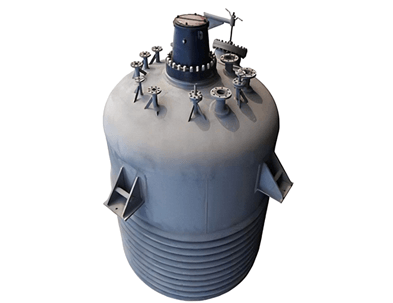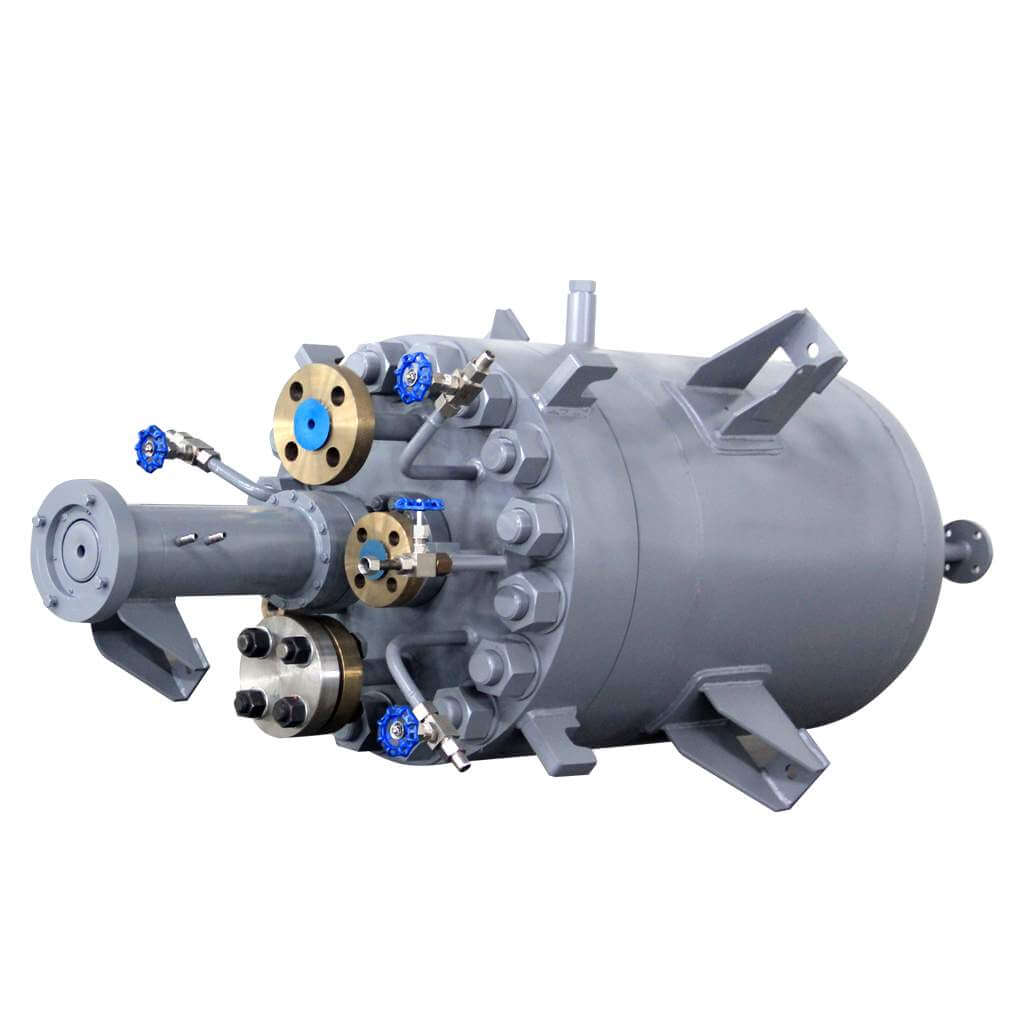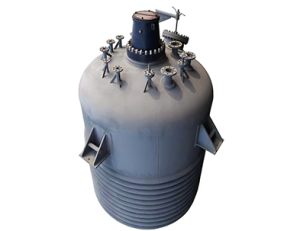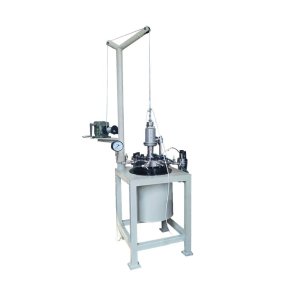The hydrogenation reactor is a type of hydrometallurgical reactor. It is a closed container with a stirrer and heating equipment inside. In the hydrogenation reactor, a certain amount of water and chemical reagents are usually added, and then heated and stirred to dissolve the reagents in the water and produce a chemical reaction. The pressure and temperature in the hydrogenation reactor can be adjusted according to reaction needs. Its characteristic is that it can inject hydrogen into the hydrogenation reactor under high pressure, so that it can reach high temperature and high-pressure reaction conditions, thereby speeding up the reaction and achieving better reaction results.
Characteristics of the hydrogenation reactor
The hydrogenation reactor is small in size, simple and reliable in structure, economical and durable, and has complete accessories. It comes standard with a micro DC motor, pressure gauge, explosion-proof device, water inlet valve, sampling valve, and temperature probe. The boiler body and heater can be completely separated to facilitate the disassembly of the hydrogenation reactor and improve work efficiency. It fundamentally solves the problem of shaft seal leakage that cannot be solved by packing seals and mechanical seals. Its advantages are extended service life and maintenance-free. The materials of the hydrogenation reactor can be carbon-manganese steel, various stainless steels, titanium and titanium alloys, nickel, Hastelloy, zirconium and its composite materials, etc. In the chemical production process, hydrogenation reactors are often used to complete processes such as hydrogenation, deamination, demercaptanization, and dehydration to produce methanol and ethanol.
One of the most significant features of the hydrogenation reactor is its ability to withstand high pressure. In hydrometallurgical production, the reaction equipment needs to withstand high-pressure hydrogen injection, and the hydrogenation reactor can withstand this pressure well, thus ensuring the normal progress of the reaction. In addition, the hydrogenation reactor also has strong corrosion resistance and can resist the erosion of corrosive substances produced in chemical reactions.
The hydrogenation reactor also has higher reaction efficiency and better reaction accuracy. Because it can react under high pressure, the hydrogenation reactor reacts faster and more efficiently than ordinary reactors, greatly improving production efficiency. At the same time, the hydrogenation reactor can also ensure the accuracy of the reaction and control the temperature, pressure, and other parameters of the reaction within a certain range, thereby ensuring the quality stability of the product.
Application of hydrogenation reactor
Hydrogenation reactors are widely used in mineral extraction, metallurgy, chemical industry, and environmental protection fields. In mineral extraction, hydrogenation reactors can be used to extract gold, silver, copper, zinc, and other metals. In the metallurgical industry, hydrogenation reactors can be used to produce aluminum, magnesium, and other metals. In the chemical industry, it can be used to produce ammonia, sulfuric acid, phosphoric acid, and other chemicals. In the field of environmental protection, hydrogenation reactors can be used to treat wastewater and waste gas.
Under the action of mechanical stirring in the hydrogenation reactor, hydrogen diffuses, convects, and reacts in the liquid phase through the stirred liquid layer. Hydrogenation reactors are mainly used in four fields including the chemical industry: liquid phase reaction processes, gas cleaning and purification, pure product manufacturing, and biological systems. A key part of these processes is adapting the hydrogenation reactions used to achieve the above reactions and absorption. Most commonly used propellers use 6 straight blade turbines or disc turbines, with an air intake pipe installed directly below the impeller.
The hydrogenation reactor is a very important reaction equipment with outstanding features and performance, which can meet the needs of chemical reactions. Hydrogenation reactor is also a very common equipment and its performance is also very excellent. The hydrogenation reactor can completely seal the reaction medium in the high-pressure part under high temperature, high pressure, high vacuum, high speed, suspension, and convection conditions, and safely react to harsh media such as flammable, explosive, and highly toxic media.






